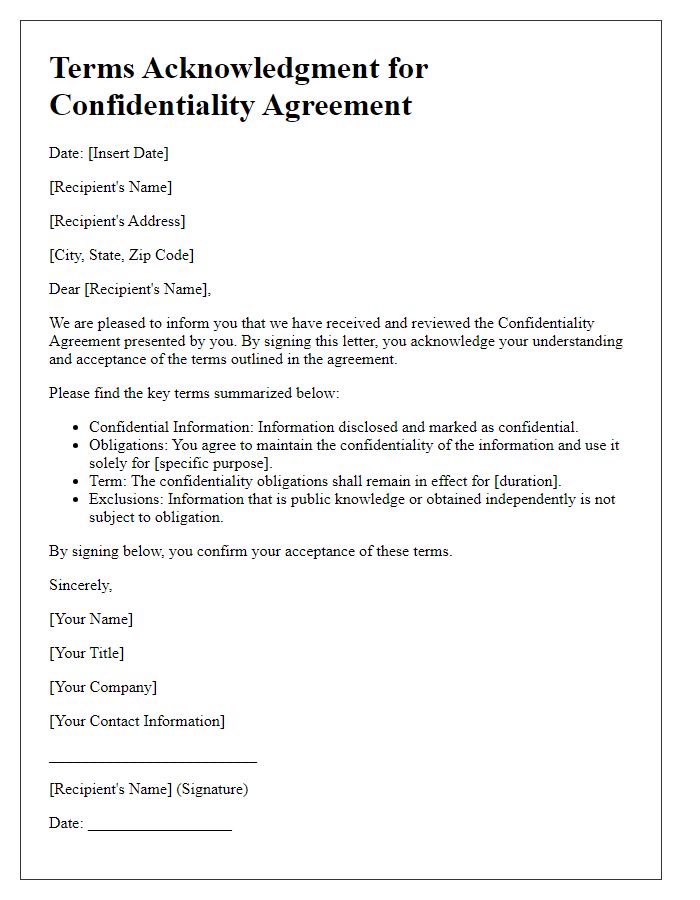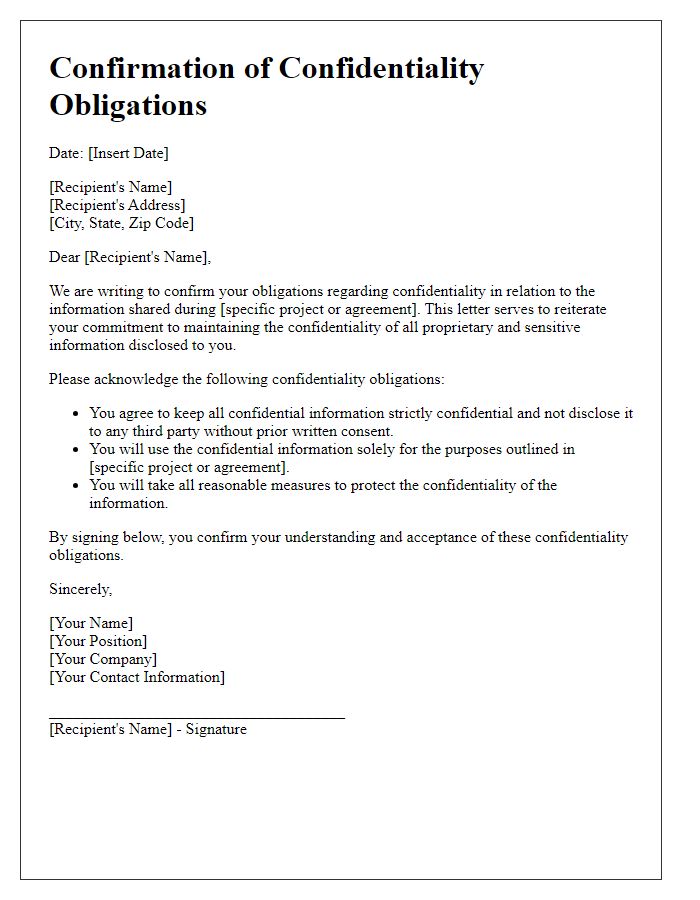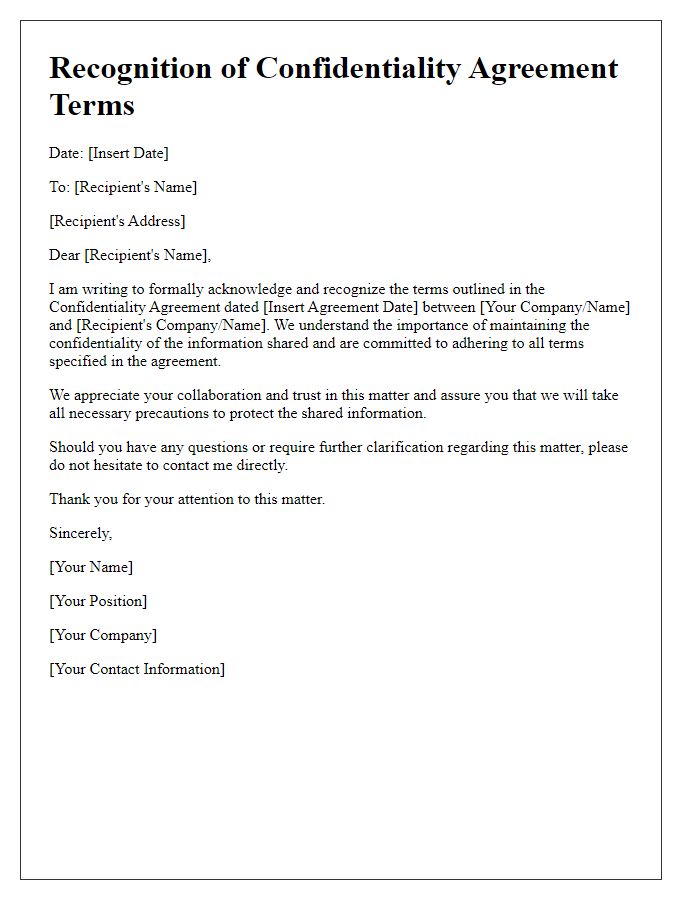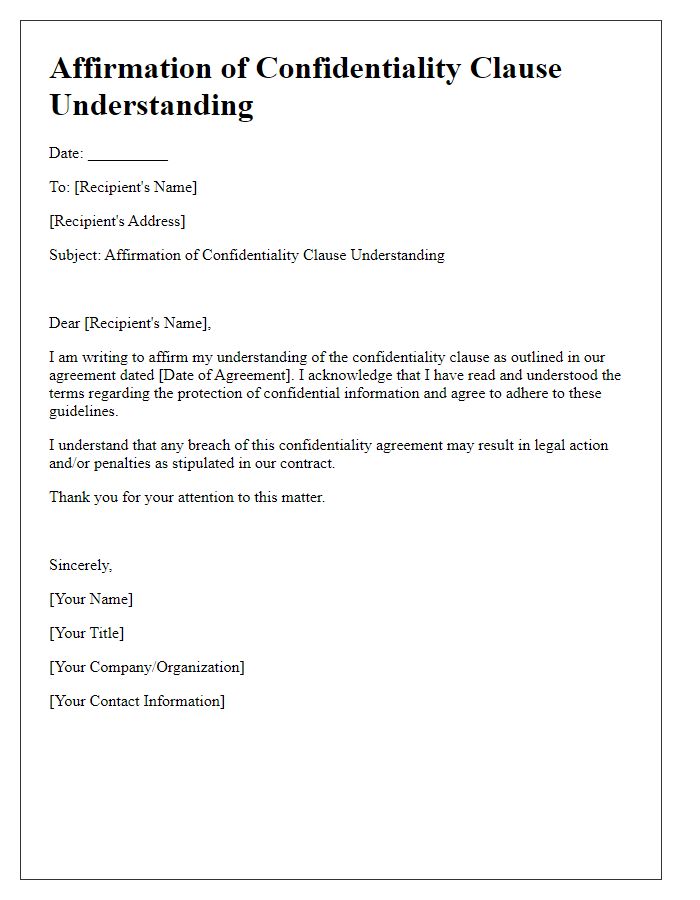When it comes to solidifying trust in business relationships, a confidentiality agreement is essential. This document serves as a protective measure, ensuring that sensitive information remains secure between parties. It outlines the terms and conditions that govern the sharing of proprietary data, fostering a sense of safety and professionalism. If you're interested in learning how to draft an effective confidentiality agreement, read on for insightful tips and templates!

Parties Involved
The key elements of a confidentiality agreement (also known as a non-disclosure agreement or NDA) should include the involved parties' names and addresses, the definition of confidential information, the purpose of the agreement, the obligations of the parties, the duration of confidentiality, and the governing law. For instance, if the parties are Tech Innovations LLC (located at 123 Technology Drive, Silicon Valley, CA) and Smart Electronics Inc. (located at 456 Innovation Way, Austin, TX), the agreement would specify that all proprietary information exchanged between these two entities, such as trade secrets, product designs, and marketing strategies, must remain confidential. The obligations might delineate how each party must protect this information and limit disclosure to third parties. The duration clause might specify that the obligations remain effective for three years post the completion of their collaboration, governed under California law for any potential disputes.
Purpose of Agreement
The purpose of a Confidentiality Agreement, often referred to as a Non-Disclosure Agreement (NDA), is to protect sensitive information shared between parties, ensuring that proprietary details remain undisclosed. This legal document establishes trust, particularly in business relationships, by outlining the definition of confidential information--such as trade secrets, client lists, and financial records--while delineating the obligations of each party. The agreement typically includes terms that specify the duration of confidentiality, which can range from one year to indefinitely, depending on the nature of the information. Violating the terms of this agreement may result in legal actions or financial penalties to compensate the affected party for any potential damages incurred.
Scope of Confidential Information
Confidentiality agreements, also known as non-disclosure agreements (NDAs), delineate the scope of confidential information between parties involved in a business arrangement. This typically includes sensitive data or proprietary information such as trade secrets, financial information, and client lists pertinent to the organization, ensuring that such details remain undisclosed. The agreement emphasizes that any exchange of information must be handled with utmost care, defining parameters for what constitutes confidential information and the obligations of each party. Terms may specify the duration of confidentiality, which can range from one to several years post-agreement, applying to both physical and digital formats of information shared during business negotiations. Breach of these terms can result in legal repercussions, underlining the critical nature of understanding and adhering to the confidentiality framework established by the agreement.
Duration of Obligation
Confidentiality agreements, crucial in protecting sensitive information, typically outline the duration of obligation that parties must adhere to. This period can vary, often lasting from one to five years, depending on the nature of the information. For instance, trade secrets may require indefinite protection, while proprietary data related to a specific project might only need coverage until the project concludes. Additionally, specific terms often include clauses on renewal or extension of confidentiality, ensuring that proprietary information remains safeguarded even after the initial period expires. Clear definitions within the agreement increase understanding of obligations, providing clarity to both parties involved in the agreement.
Consequences of Breach
A confidentiality agreement, also known as a non-disclosure agreement (NDA), establishes the expectations for privacy regarding sensitive information shared between parties. Breaching this agreement can lead to serious consequences, including legal actions and financial penalties. For instance, parties may seek injunctions to prevent further disclosures or pursue damages that could potentially reach thousands of dollars, depending on the severity of the breach. The specific terms outlined in the confidentiality agreement detail the obligations of both parties and the nature of the confidential information, such as trade secrets, business plans, or proprietary technologies. Additionally, the agreement may specify the duration of confidentiality, typically ranging from two to five years post-termination of the agreement. Jurisdiction for any legal disputes arising from the breach often falls under local laws or predetermined arbitration processes, which can influence the outcomes significantly.













Comments